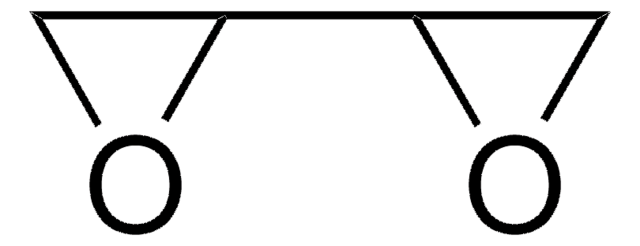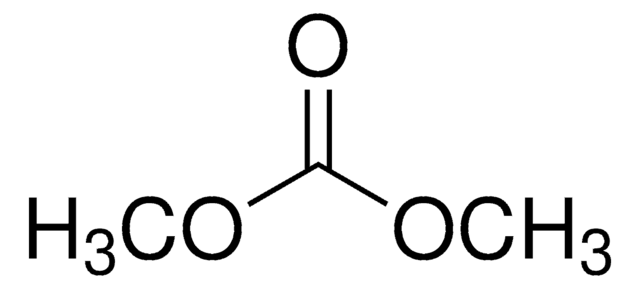139564
1,2,7,8-Diepoxyoctane
97%
Synonyme(s) :
1,7-Octadiene bisoxide, 1,7-Octadiene diepoxide, 2,2′-(1,4-Butanediyl)bis[oxirane]
About This Item
Produits recommandés
Niveau de qualité
Essai
97%
Forme
liquid
Indice de réfraction
n20/D 1.445 (lit.)
pb
240 °C (lit.)
Densité
0.997 g/mL at 25 °C (lit.)
Chaîne SMILES
C(CCC1CO1)CC2CO2
InChI
1S/C8H14O2/c1(3-7-5-9-7)2-4-8-6-10-8/h7-8H,1-6H2
Clé InChI
LFKLPJRVSHJZPL-UHFFFAOYSA-N
Vous recherchez des produits similaires ? Visite Guide de comparaison des produits
Application
- Removal of GenX by APTES functionalized diepoxyoctane cross-linked chitosan beads: Cross-linked and aminated chitosan beads were synthesized using 1,2:7,8-diepoxyoctane and 3-aminopropyl triethoxysilane. These beads were studied for their efficiency in removing GenX, a problematic environmental pollutant, demonstrating a potential application in water treatment technologies (M Vakili, F Gholami, HM Zwain, W Wang… - Journal of …, 2023 - Elsevier).
Mention d'avertissement
Danger
Mentions de danger
Conseils de prudence
Classification des risques
Acute Tox. 3 Dermal - Acute Tox. 4 Oral - Carc. 1B - Muta. 2
Code de la classe de stockage
6.1C - Combustible acute toxic Cat.3 / toxic compounds or compounds which causing chronic effects
Classe de danger pour l'eau (WGK)
WGK 3
Point d'éclair (°F)
208.4 °F - closed cup
Point d'éclair (°C)
98 °C - closed cup
Équipement de protection individuelle
Eyeshields, Faceshields, Gloves, type ABEK (EN14387) respirator filter
Faites votre choix parmi les versions les plus récentes :
Déjà en possession de ce produit ?
Retrouvez la documentation relative aux produits que vous avez récemment achetés dans la Bibliothèque de documents.
Notre équipe de scientifiques dispose d'une expérience dans tous les secteurs de la recherche, notamment en sciences de la vie, science des matériaux, synthèse chimique, chromatographie, analyse et dans de nombreux autres domaines..
Contacter notre Service technique









